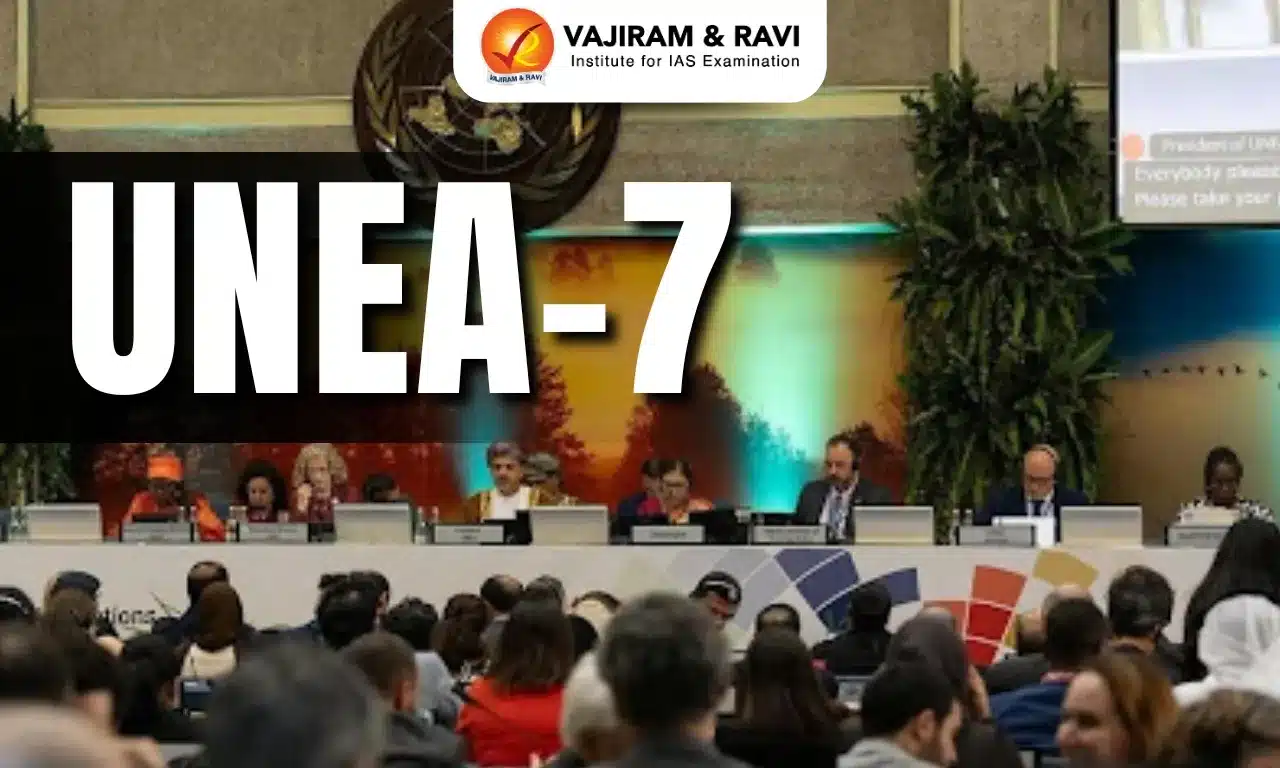What’s in today’s article?
- About UN Biodiversity Conference (History, Purpose, Achievements, etc.)
- News Summary (Highlights of COP15)
Why in News?
- In a historic UN Biodiversity agreement, over 190 countries agreed to protect 30% of the planet by 2030, while pledging to achieve 23 targets to reverse ecosystem degradation under four overarching goals for survival of the natural world.
About United Nations Biodiversity Conference:
- The UN Biodiversity Conference is the regular meeting of the countries who have signed (and are therefore ‘parties to’) the Convention on Biological Diversity (CBD).
- CBD is an international agreement for conserving biodiversity with the vision of “living in harmony with nature by 2050”.
- The convention was adopted at the Rio Earth Summit in 1992.
- The first Conference of the Parties to the convention (COP 1) took place in Nassau, Bahamas in 1994.
- The COP is the arena for international governments to meet and review progress on the convention and establish new measures needed to support its goals.
- The objectives of the Convention on Biological Diversity encompass both social and economic aspects:
- the conservation of biological diversity;
- the sustainable use of its components; and
- the fair and equitable sharing of the benefits of biological diversity.
What are the achievements of United Nations Biodiversity Conference?
- Areas of progress in biodiversity conservation include:
- The incorporation of biodiversity values into national accounting systems;
- A decline in the rate of deforestation globally of about one-third in 2020 compared with the previous decade;
- The expansion of protected terrestrial and marine areas and areas of particular importance for biodiversity;
- An increase in available data and information on biodiversity;
- A doubling of financial resources available for biodiversity through international flows.
- The conferences have also seen the adoption of supplementary agreements, including the –
- Cartagena Protocol on Biosafety (2000), on managing the movement of living modified organisms from one country to another and
- the Nagoya Protocol on Access and Benefit-Sharing (2010), which aims to ensure that the benefits of genetic resources – which refers to living organisms with perceived value – are managed or distributed in a fair and equitable way.
- Along with the Nagoya Protocol, the COP-10 also adopted a ten-year framework for action by all countries to save biodiversity.
- Officially known as “Strategic Plan for Biodiversity 2011-2020“, it provided a set of 20 ambitious yet achievable targets collectively known as the Aichi Targets for biodiversity.
How many countries are the part of the Convention on Biological Diversity?
- A total of 196 countries (including India) are party to the Convention on Biological Diversity – although the United States is notably absent.
- Each country is required to set National Biodiversity Strategies and Action Plans (NBSAPs) detailing how the principles of the conservation and sustainable use of biological resources will be integrated into their country’s national policies.
About Conference of Parties 15 (COP15):
- COP15 has been split into two parts, the first was held online in October 2021.
- The second part was recently held in Montreal, Canada.
- The COP15 was significant in the sense that a new ‘post-2020 global biodiversity framework’ was expected to be finalised and it has been finalised.
- UN Secretary-General António Guterres has called this conference an opportunity to “call a ceasefire” on the human-inflicted destruction of ecosystems, which he has labelled a “suicidal war against nature”.
News Summary:
- Under the presidency of China, the 15th Conference of Parties (COP15) of the UN Biodiversity took place in Montreal, Canada from 7th December to 19th December, 2022.
- The parties have reached a historic deal that would represent the most significant effort to protect the world’s lands and oceans and provide critical financing to save biodiversity in the developing world.
Highlights of the Framework:
Image Caption: Key Global Targets for 2030
- The deal calls for raising $200 billion by 2030 for biodiversity from a range of sources.
- As a part of the financing package, the framework asks for increasing to at least $20 billion annually by 2025 the money that goes to poor countries.
- That number would increase to $30 billion each year by 2030.
- Under the deal, countries have agreed to reduce harmful government subsidies worth $500 billion annually.
- The agreement also obliges countries to monitor and report every five years or less on a large set of headlines and other indicators related to progress against the GBF’s goals and targets.
- The next COP i.e., COP16 will be held in Turkey in 2024.
Q1) What is the purpose of the Cartagena Protocol on Biosafety?
The Cartagena Protocol is an international agreement managing the movement of living modified organisms from one country to another. It aims to protect nature from the potential risks posed by such organisms by establishing procedures countries can use to make informed decisions on the import of such organisms.
Q2) What is Aichi Biodiversity Targets?
The Aichi Targets, adopted during the 2010 CBD summit in Nagoya, located in Japan’s Aichi prefecture, included goals such as reducing deforestation by at least half during the coming decade and curbing pollution so that it no longer harmed ecosystems.
Source: Historic biodiversity deal gets the nod at COP15 summit in Canada
Last updated on December, 2025
→ Check out the latest UPSC Syllabus 2026 here.
→ Join Vajiram & Ravi’s Interview Guidance Programme for expert help to crack your final UPSC stage.
→ UPSC Mains Result 2025 is now out.
→ UPSC Notification 2026 is scheduled to be released on January 14, 2026.
→ UPSC Calendar 2026 is released on 15th May, 2025.
→ The UPSC Vacancy 2025 were released 1129, out of which 979 were for UPSC CSE and remaining 150 are for UPSC IFoS.
→ UPSC Prelims 2026 will be conducted on 24th May, 2026 & UPSC Mains 2026 will be conducted on 21st August 2026.
→ The UPSC Selection Process is of 3 stages-Prelims, Mains and Interview.
→ UPSC Result 2024 is released with latest UPSC Marksheet 2024. Check Now!
→ UPSC Prelims Result 2025 is out now for the CSE held on 25 May 2025.
→ UPSC Toppers List 2024 is released now. Shakti Dubey is UPSC AIR 1 2024 Topper.
→ UPSC Prelims Question Paper 2025 and Unofficial Prelims Answer Key 2025 are available now.
→ UPSC Mains Question Paper 2025 is out for Essay, GS 1, 2, 3 & GS 4.
→ UPSC Mains Indian Language Question Paper 2025 is now out.
→ UPSC Mains Optional Question Paper 2025 is now out.
→ Also check Best IAS Coaching in Delhi

















